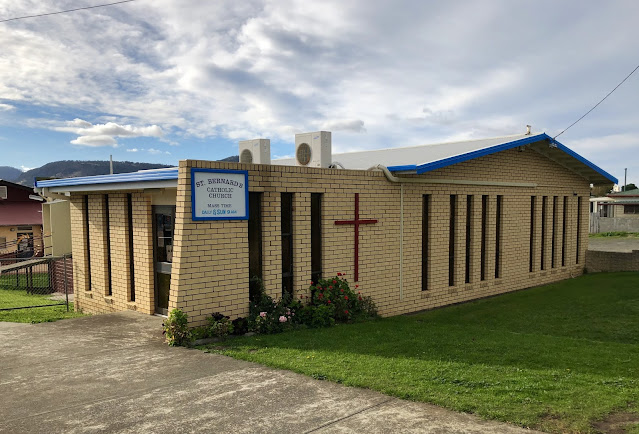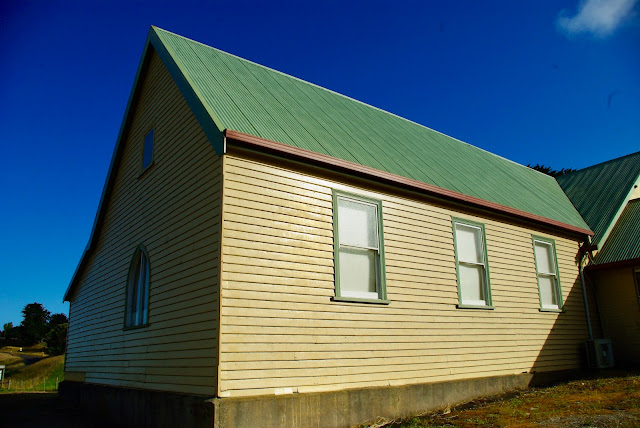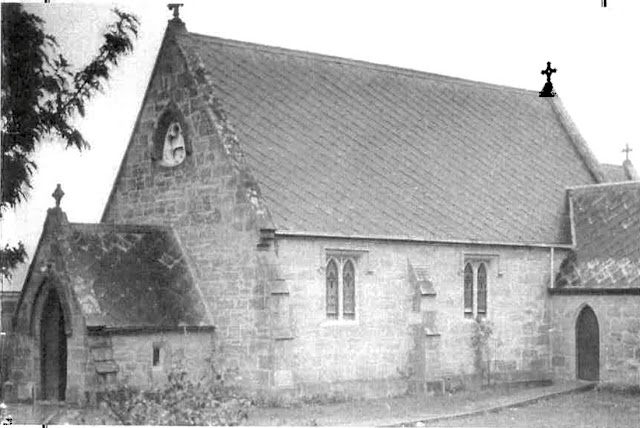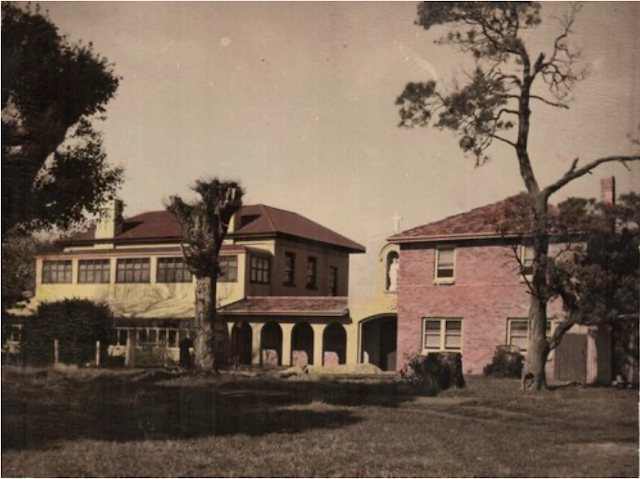No. 945 - Claremont - St Bernard's Catholic Church "Economy with Dignity"

Claremont is a suburb of the City of Glenorchy within the Greater Hobart region. It is named after Claremont House built in the 1830s by Henry Bilton. Claremont was once the site of an army training camp established during the Great War. At this time the area had only a few scattered houses and a railway station in a largely rural setting. From the 1950s public housing was built at Claremont which resulted in significant population growth. Before a church was built at Claremont, Catholics went to Mass at Cadbury’s Hall and later in the local Memorial Hall. The rapid growth of the suburb after World War Two saw an influx of migrants which included a significant number of Polish and Croatian Catholics. St Bernard’s was officially opened and blessed by Archbishop Guilford Young on Sunday, 20 April 1958. Addressing the assembled parishioners, Archbishop Young remarked that the church represented “a fascinating combination of steel, timber and glass, which combined economy with dignity”. T...








